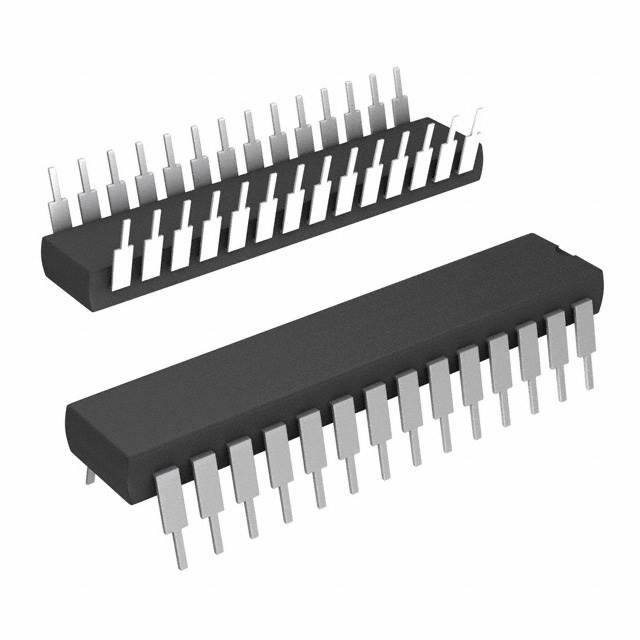Xem thông số kỹ thuật để biết chi tiết sản phẩm.

ADG426BNZ
Product Overview
Category
ADG426BNZ belongs to the category of analog switches.
Use
The ADG426BNZ is used for signal routing and switching applications in various electronic circuits.
Characteristics
- Analog switch with low on-resistance
- High bandwidth
- Low power consumption
- Wide supply voltage range
- Fast switching speed
Package
ADG426BNZ comes in a small outline integrated circuit (SOIC) package.
Essence
The essence of ADG426BNZ lies in its ability to provide efficient signal routing and switching capabilities in electronic circuits.
Packaging/Quantity
ADG426BNZ is typically packaged in reels or tubes, with a quantity of 250 units per reel/tube.
Specifications
- Supply Voltage Range: ±2.5V to ±18V
- On-Resistance: 1.5Ω (typical)
- Bandwidth: 200MHz (typical)
- Power Consumption: 0.5mW (typical)
- Switching Time: 35ns (typical)
Detailed Pin Configuration
ADG426BNZ has a total of 16 pins, which are configured as follows:
- Pin 1: V+
- Pin 2: D1
- Pin 3: D2
- Pin 4: D3
- Pin 5: D4
- Pin 6: D5
- Pin 7: D6
- Pin 8: D7
- Pin 9: D8
- Pin 10: COM
- Pin 11: NO
- Pin 12: NC
- Pin 13: GND
- Pin 14: S1
- Pin 15: S2
- Pin 16: V-
Functional Features
- Low on-resistance for minimal signal distortion
- High bandwidth enables accurate transmission of high-frequency signals
- Wide supply voltage range allows compatibility with various power sources
- Fast switching speed ensures efficient signal routing
Advantages and Disadvantages
Advantages
- Low on-resistance minimizes signal loss
- High bandwidth enables accurate transmission of high-frequency signals
- Wide supply voltage range provides flexibility in power source selection
- Fast switching speed ensures efficient signal routing
Disadvantages
- Limited number of channels (single-channel switch)
- Relatively higher cost compared to some alternative models
Working Principles
ADG426BNZ operates based on the principle of MOSFET-based analog switches. It utilizes MOSFET transistors to control the flow of signals through its internal circuitry, allowing for efficient signal routing and switching.
Detailed Application Field Plans
ADG426BNZ finds applications in various electronic circuits, including but not limited to: - Audio systems - Communication systems - Test and measurement equipment - Industrial automation - Medical devices
Detailed and Complete Alternative Models
Some alternative models to ADG426BNZ that offer similar functionality include: - ADG436BNZ - ADG444BNZ - ADG452BNZ - ADG461BNZ - ADG465BNZ
These alternative models can be considered based on specific requirements and design constraints.
Word count: 389 words
Liệt kê 10 câu hỏi và câu trả lời thường gặp liên quan đến ứng dụng ADG426BNZ trong giải pháp kỹ thuật
Sure! Here are 10 common questions and answers related to the application of ADG426BNZ in technical solutions:
Q: What is ADG426BNZ? A: ADG426BNZ is a high-performance, quad SPST (Single-Pole Single-Throw) analog switch designed for various technical applications.
Q: What is the voltage range supported by ADG426BNZ? A: ADG426BNZ supports a wide voltage range from -5V to +5V, making it suitable for both analog and digital signal switching.
Q: Can ADG426BNZ handle high-frequency signals? A: Yes, ADG426BNZ has a bandwidth of up to 200 MHz, allowing it to handle high-frequency signals effectively.
Q: How many channels does ADG426BNZ have? A: ADG426BNZ has four independent channels, enabling simultaneous switching of multiple signals.
Q: What is the on-resistance of ADG426BNZ? A: The typical on-resistance of ADG426BNZ is very low, around 0.5 ohms, ensuring minimal signal distortion during switching.
Q: Is ADG426BNZ compatible with both CMOS and TTL logic levels? A: Yes, ADG426BNZ is designed to be compatible with both CMOS and TTL logic levels, providing flexibility in various applications.
Q: Can ADG426BNZ operate with a single power supply? A: Yes, ADG426BNZ can operate with a single power supply ranging from +2.7V to +12V, simplifying the system design.
Q: Does ADG426BNZ have built-in protection features? A: Yes, ADG426BNZ includes built-in electrostatic discharge (ESD) protection, ensuring robustness and reliability in harsh environments.
Q: What is the typical power consumption of ADG426BNZ? A: The typical power consumption of ADG426BNZ is very low, around 5 microamps, making it suitable for battery-powered applications.
Q: Can ADG426BNZ be used in audio applications? A: Yes, ADG426BNZ can be used in audio applications such as audio routing, audio signal switching, and audio effects processing.
Please note that these answers are general and may vary depending on specific application requirements.

